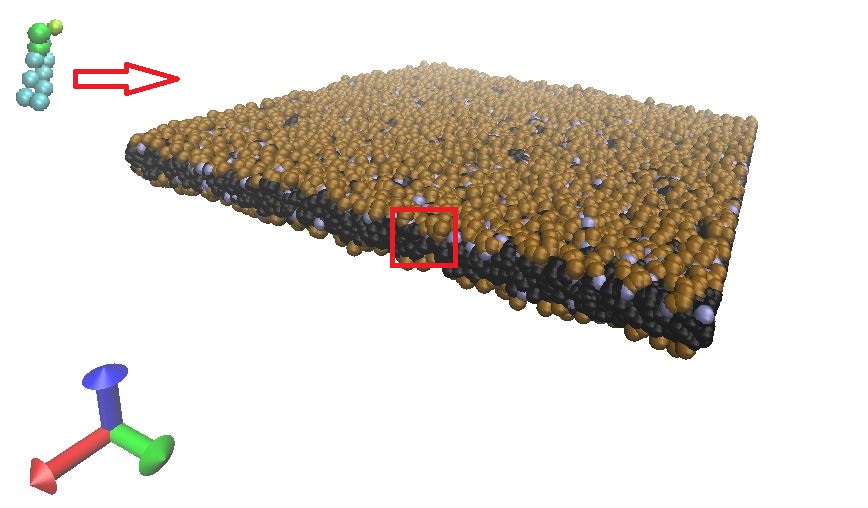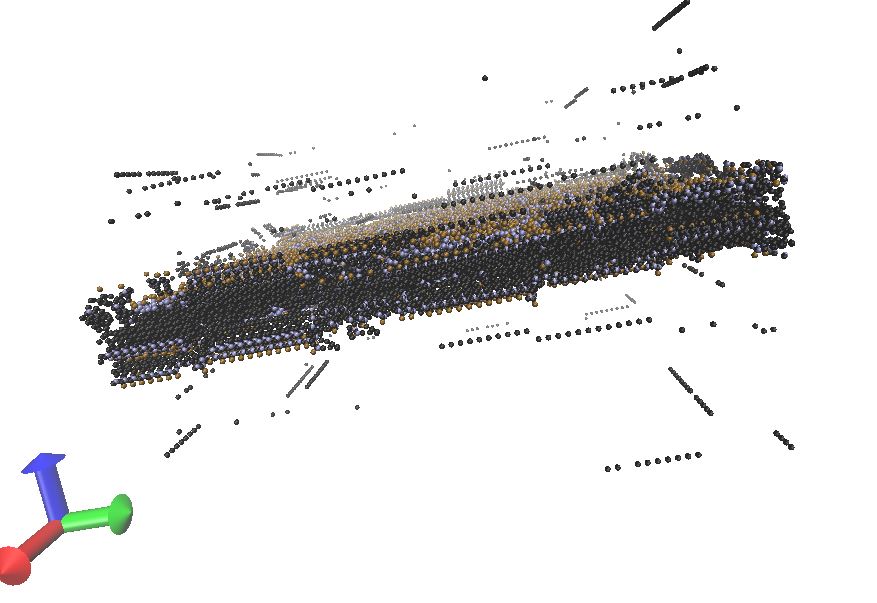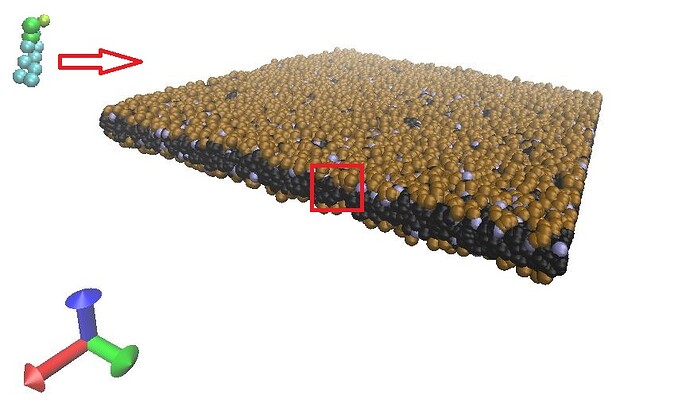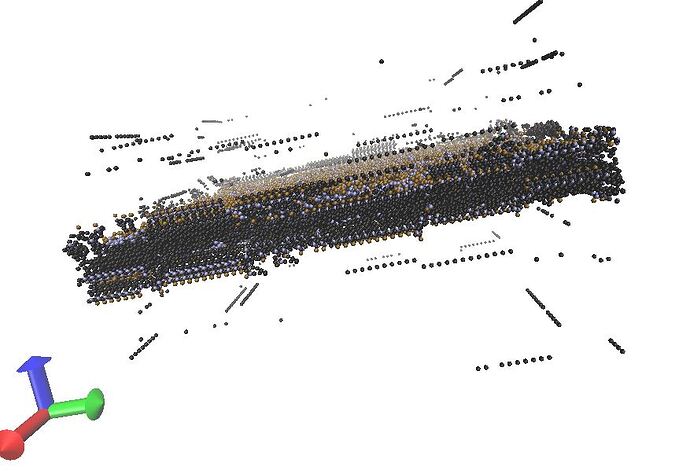Dear Axel,
Thank you again for your reply. But I think the tricky issue is the
bilayer structure, which I can not show how is it in a short demo.
you are not paying attention. but it is *irrelevant* to have the *entire*
bilayer included. in fact, you don't even need the bilayer at all. i have
asked to you build a small test case. all this has to do is to demonstrate
that thing go wrong. this is you can do it with simple small chunk of a
lennard jones liquid or even an empty box.
I attached two figures to show what I am trying to do, hope it works this
time.
no it doesn't.
so i've put in some effort to into giving you an example for what i mean.
what i am seeing - before even worrying about depositing - is, that your
molecule file is bogus. the following input script creates an empty box and
then places a single molecule into the center and writes it out as an image
and data file (both are required to actually see your bonding pattern,
trajectory dumps don't carry that information, which is why you believe,
that there are no bonds. they *are* there, they are just bogus and VMD's
heuristic guessing doesn't see them).
so before anything else, you must correct your molecule file. in the
future, please make a better effort to make certain, that what you are
providing is meaningful and correct. having to find out that you have
provided bogus input data is extremely annoying (btw: also your molecule
file has no charge information, even though you are using atom style full).
then you can just try running fix deposit in a sub-region of the (otherwise
empty) box and continue to build a more complex mockup of your actual
target system step-by-step, checking at every step, whether things are
still working or when they fail. this is what you should have done yourself
from the beginning, and that is how you avoid embarrassing yourself in
front of the thousands of subscribers of this list.
please be aware that you have now exhausted my quota of good will and i
will not respond to further requests for help unless you make sure that the
provided information is proper and complete, you provide convincing
evidence for a fault in LAMMPS and it is easy to help.
axel
units lj
atom_style full
boundary p p p
region box block -10 10 -10 10 -20 20
create_box 10 box bond/types 5 angle/types 10 &
extra/bond/per/atom 4 extra/angle/per/atom 4
extra/special/per/atom 20
mass * 1.0
molecule lipid lipidu.mol
create_atoms 0 single 0.0 0.0 0.0 mol lipid 887766
write_dump all image add.jpg type type
write_data add.data



